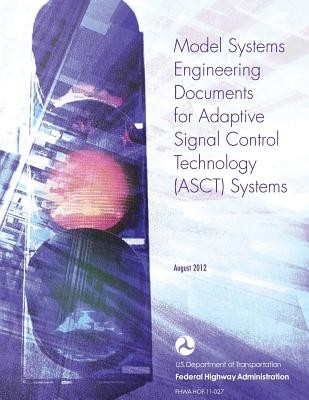
- We will send in 10–14 business days.
- Author: Federal Highway Administration
- Publisher: CreateSpace Independent Publishing Platform
- Year: 2015
- Pages: 276
- ISBN-10: 150855711X
- ISBN-13: 9781508557111
- Format: 21.6 x 28 x 1.5 cm, softcover
- Language: English
- SAVE -10% with code: EXTRA
Model Systems Engineering Documents for Adaptive Signal Control Technology (ASCT) Systems (e-book) (used book) | bookbook.eu
Reviews
Description
The vision of the Every Day Counts Adaptive Signal Control Technology (ASCT) Initiative is to mainstream the use of adaptive signal control technology. "Mainstream the use of" suggests that when traffic conditions, agency needs, resources and capability support the use of ASCT it should be implemented. These model systems engineering documents support the process of exploring the need for ASCT and articulating a set of requirements that enable agencies to specify, select, implement and test adaptive signal control technology. Over the last two decades a significant number of adaptive systems have been deactivated well before the end of their useful life due either to a lack of adequate resources or agency capability to support system operation and maintenance, or in some cases a failure to properly align agency and system operations objectives. The risks associated with ASCT implementation are significant. This document helps accomplish the tasks of clarifying objectives, identifying needs and defining constraints by leading the reader through a series of questions. The outcome of selecting and tailoring the sample responses will be a set of clear and concise statements to formulate the required systems engineering documentation. By following this guidance an agency can expect to produce the following documents: Concept of Operation, System Requirements, Verification Plan, Validation Plan.
EXTRA 10 % discount with code: EXTRA
The promotion ends in 19d.21:32:07
The discount code is valid when purchasing from 10 €. Discounts do not stack.
- Author: Federal Highway Administration
- Publisher: CreateSpace Independent Publishing Platform
- Year: 2015
- Pages: 276
- ISBN-10: 150855711X
- ISBN-13: 9781508557111
- Format: 21.6 x 28 x 1.5 cm, softcover
- Language: English English
The vision of the Every Day Counts Adaptive Signal Control Technology (ASCT) Initiative is to mainstream the use of adaptive signal control technology. "Mainstream the use of" suggests that when traffic conditions, agency needs, resources and capability support the use of ASCT it should be implemented. These model systems engineering documents support the process of exploring the need for ASCT and articulating a set of requirements that enable agencies to specify, select, implement and test adaptive signal control technology. Over the last two decades a significant number of adaptive systems have been deactivated well before the end of their useful life due either to a lack of adequate resources or agency capability to support system operation and maintenance, or in some cases a failure to properly align agency and system operations objectives. The risks associated with ASCT implementation are significant. This document helps accomplish the tasks of clarifying objectives, identifying needs and defining constraints by leading the reader through a series of questions. The outcome of selecting and tailoring the sample responses will be a set of clear and concise statements to formulate the required systems engineering documentation. By following this guidance an agency can expect to produce the following documents: Concept of Operation, System Requirements, Verification Plan, Validation Plan.


Reviews